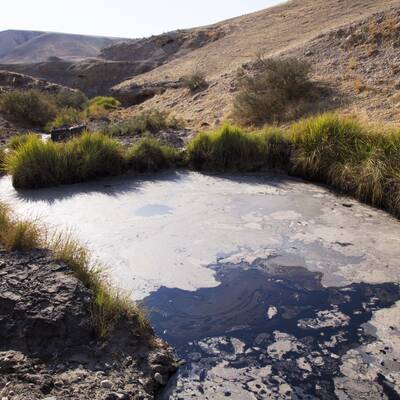
Yazdegerd Castle
RamhormozThe Sassanid era can be considered as one of the most important and remarkable periods in Iranian civilization and culture so that the influence of the Sassanid culture can be traced not only inside the borders of Iran but also it influenced the countries beyond its borders such as India, China, Western Europe, and Africa. In the east of Khuzestan, in the village of Cham Lishan, Ramhormoz County, there is a collection of monuments belonging to the Sassanid period known as Yazdgerd or Tashari Castle.
The castle is located thirty-five kilometers northeast of Ramhormoz in Khuzestan province. To visit this relic of the Sassanid era, after crossing Mamatin village, one must enter the village of Tashki-Shardin by crossing the road of Ramhormoz-Baghmalk.
The castle has two entrances, one north, and one south. It is possible to reach the northern gate through the road of Tashki village. A village that has a beautiful and important position due to its location along the river Ala and Yazdgerd Castle in its neighborhood. Tashki village is located in narrow valleys and its inhabitants cultivate rice by using Ala river water.
After crossing the village, we reach the northern gate via a rock road. The water supply was important for these castles. There are burrows and facilities for guiding the water of the river into the castle in the west of the castle and below it. At the northern gate, there are remnants of a stone-and-mortar tower, as well as houses made of mud and plaster. These houses are separated by narrow, long streets. There are also traces of stone houses, rooms, bungalows, alleys and temples.
The second entrance gate is located on the south side of the castle. There exist also remnants of a tower at the south gate. There is a moat at the front and bottom of the southern gate that is the most important difference between the southern gate and the northern gate. As a defensive factor, this moat prevented the enemy from entering the castle.
The strategic position of the castle, along with the deep, terrifying cliffs surrounding it, makes it difficult for the enemy to reach this castle. The valley in the west of the castle is known as Mokhtarak Valley.
Visiting this fortified and large fortress, which stood like a modern-day town against the enemy, gives visitors the feeling of traveling to the glorious Sassanid Period.
